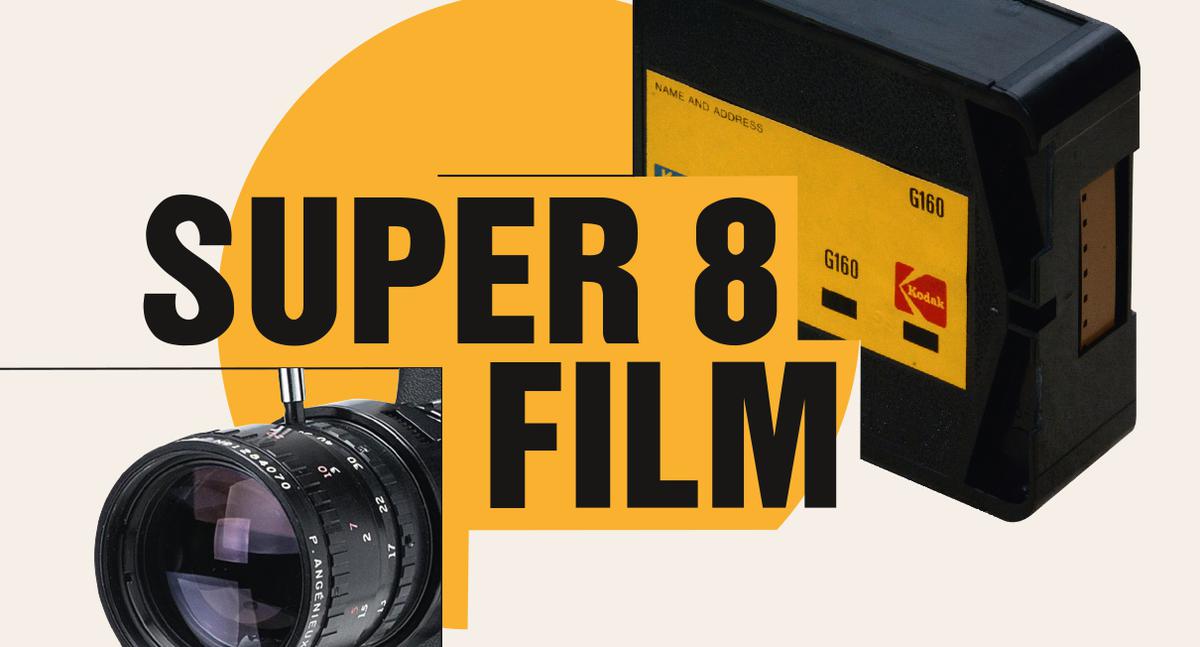In the days before the camcorder (and now the smartphone) the popular Super 8mm film was a great way to shoot home movies and create memories. Some filmmakers also used Super 8 to create movies and documentaries in the past. Today, it is still used by a niche market, with famous film director Oliver Stone using it in the 1991 film JFK to reflect a different look into scenes (even though the format came out two years after JFK’s assassination). Some famous users of Super 8 other than Oliver Stone include Sam Raimi, Kevin Smith, JJ Abrams, and even one of the most famous movie producers of all time, Steven Spielberg.
In 1965, Eastman Kodak launched the Super 8 film format. These were plastic, light-proof cartridges that came in a coaxial supply. There was 50 feet of film in one spool at 72 frames per foot, for a grand total of 3,600 frames per cartridge. At the time, professional motion pictures had a standard of 24 frames per second (fps), which allowed for 2.5 minutes of footage at 24 fps. The original Super 8 film was silent, but by 1973 sound was included in a separate cartridge that was a lot larger than the original cartridge. Remarkably, the 50-foot film cartridge is still manufactured to this day, but the Super 8 sound film was discontinued in 1997 because of environmental regulations.
The Super 8 format was widely popular from its release to around 1980, where video tape largely replaced it. However, Super 8 entered a revival period in the 1980s when Music Television (MTV) used it for music videos when it debuted in 1981. According to Alan Kattelle, who wrote Home Movies: A History of the American Industry, 1897-1979, “The targeted market for the new product seem unquestionably to have been the amateur filmmaker, beginning with the Instamatic name itself, thus tying the product in the public’s mind with the hugely successful Instamatic still cameras, which sold over ten million units in the first two years on the market. And with Walt Disney as salesman for the vast TV audience, Kodak chose a handsome little blond four-year old called ‘Speedy Loadum’ to demonstrate the product to retailers. The message was: Super 8 cameras are ‘FUN’ and ‘EASY TO USE!’”
Super 8 wasn’t just used in the movie industry or by amateur filmmakers who wished to hit it big. Due to its portability and sound capabilities, which were unrivaled at the time, it was also used in the scientific and anthropological fields to capture film of different cultures around the world. Some already-released films were even condensed onto Super 8, mostly Charlie Chaplin films or other silent movies. The Walt Disney Company also released many of their animated feature films in Super 8 as well. The Super 8 format became popular in airplane travel as well—in 1971, in-flight movies were shown in Super 8 format until videos started replacing them.
There are many homages to Super 8 film—the 2011 movie Super 8 was about a group of teenagers filming their experiences with an alien in the summer of 1979, while those majoring in art, cinema, or film at colleges still use Super 8 film today. It is said that everyone gets their 15 minutes of fame—and the Super 8 film helped with that.
Also published in GADGETS MAGAZINE November 2017 Issue
Words by Jose Alvarez
